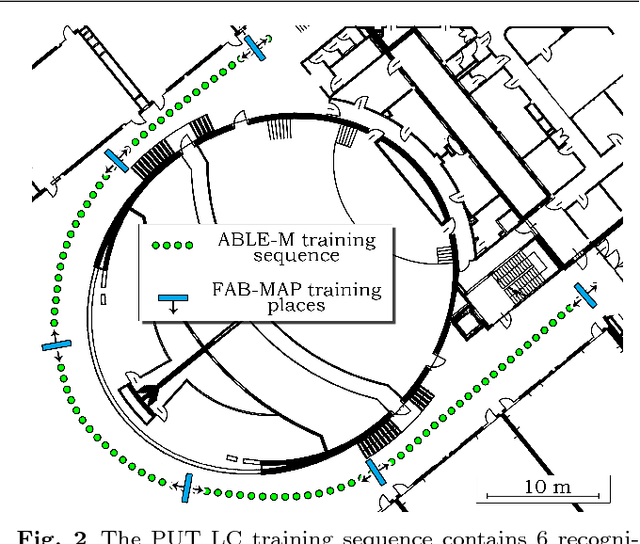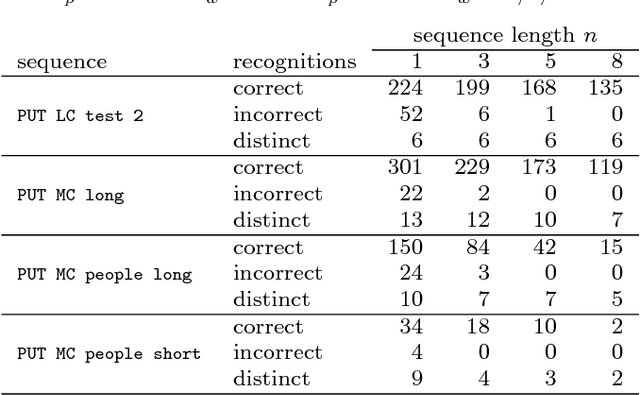Real-Time Visual Place Recognition for Personal Localization on a Mobile Device
Paper and Code
Apr 27, 2017



The paper presents an approach to indoor personal localization on a mobile device based on visual place recognition. We implemented on a smartphone two state-of-the-art algorithms that are representative to two different approaches to visual place recognition: FAB-MAP that recognizes places using individual images, and ABLE-M that utilizes sequences of images. These algorithms are evaluated in environments of different structure, focusing on problems commonly encountered when a mobile device camera is used. The conclusions drawn from this evaluation are guidelines to design the FastABLE system, which is based on the ABLE-M algorithm, but introduces major modifications to the concept of image matching. The improvements radically cut down the processing time and improve scalability, making it possible to localize the user in long image sequences with the limited computing power of a mobile device. The resulting place recognition system compares favorably to both the ABLE-M and the FAB-MAP solutions in the context of real-time personal localization.
 Add to Chrome
Add to Chrome Add to Firefox
Add to Firefox Add to Edge
Add to Edge